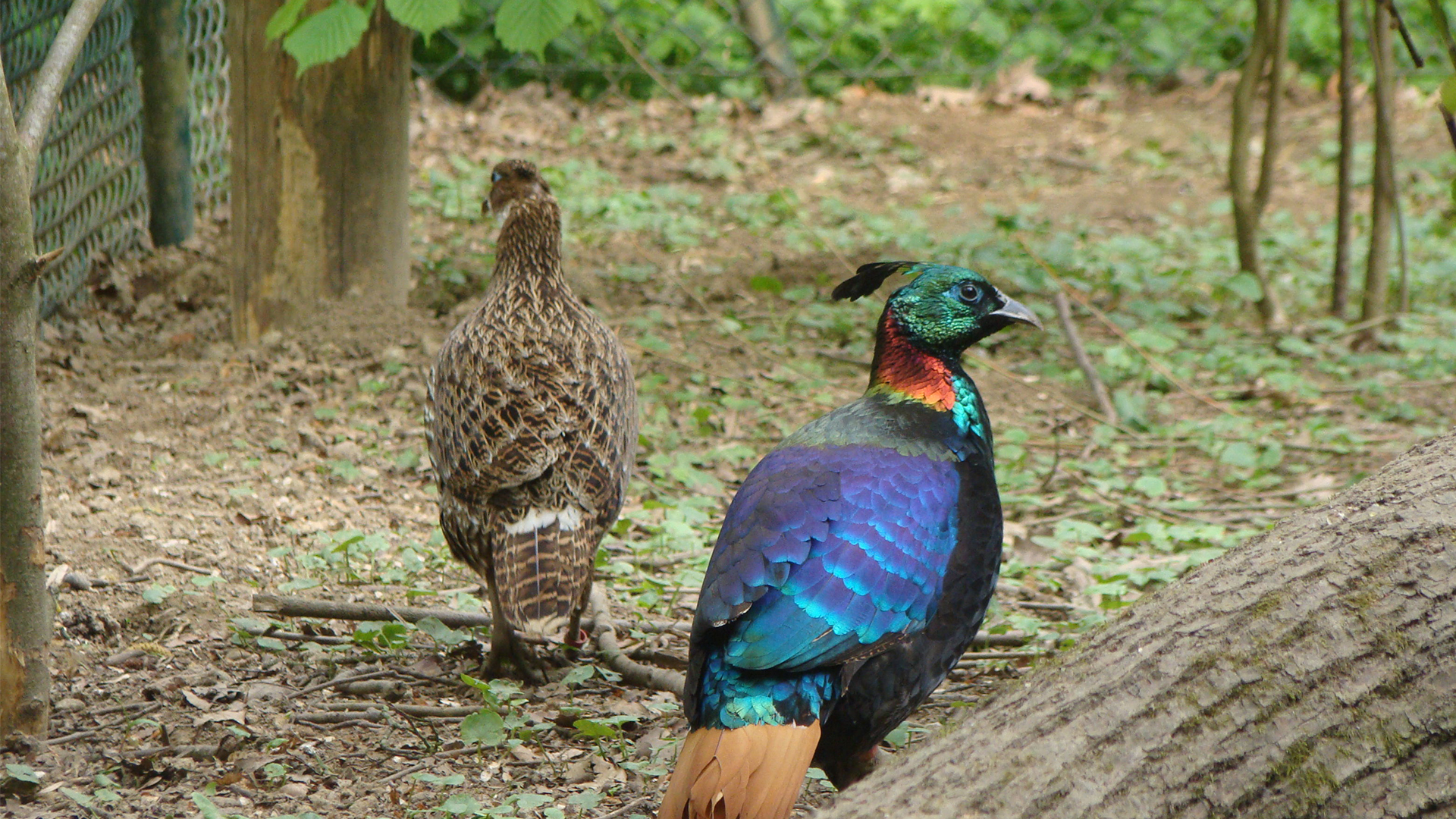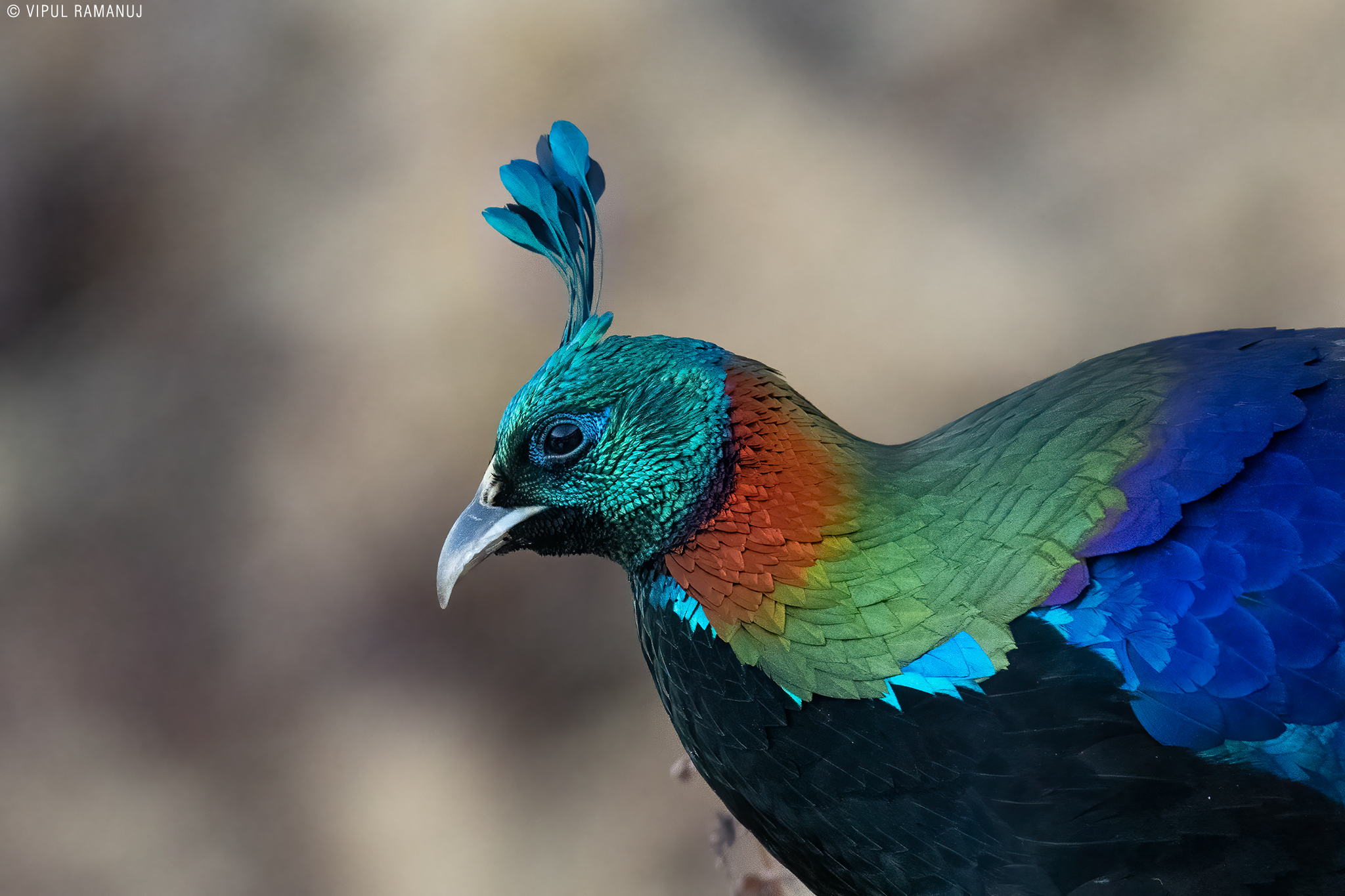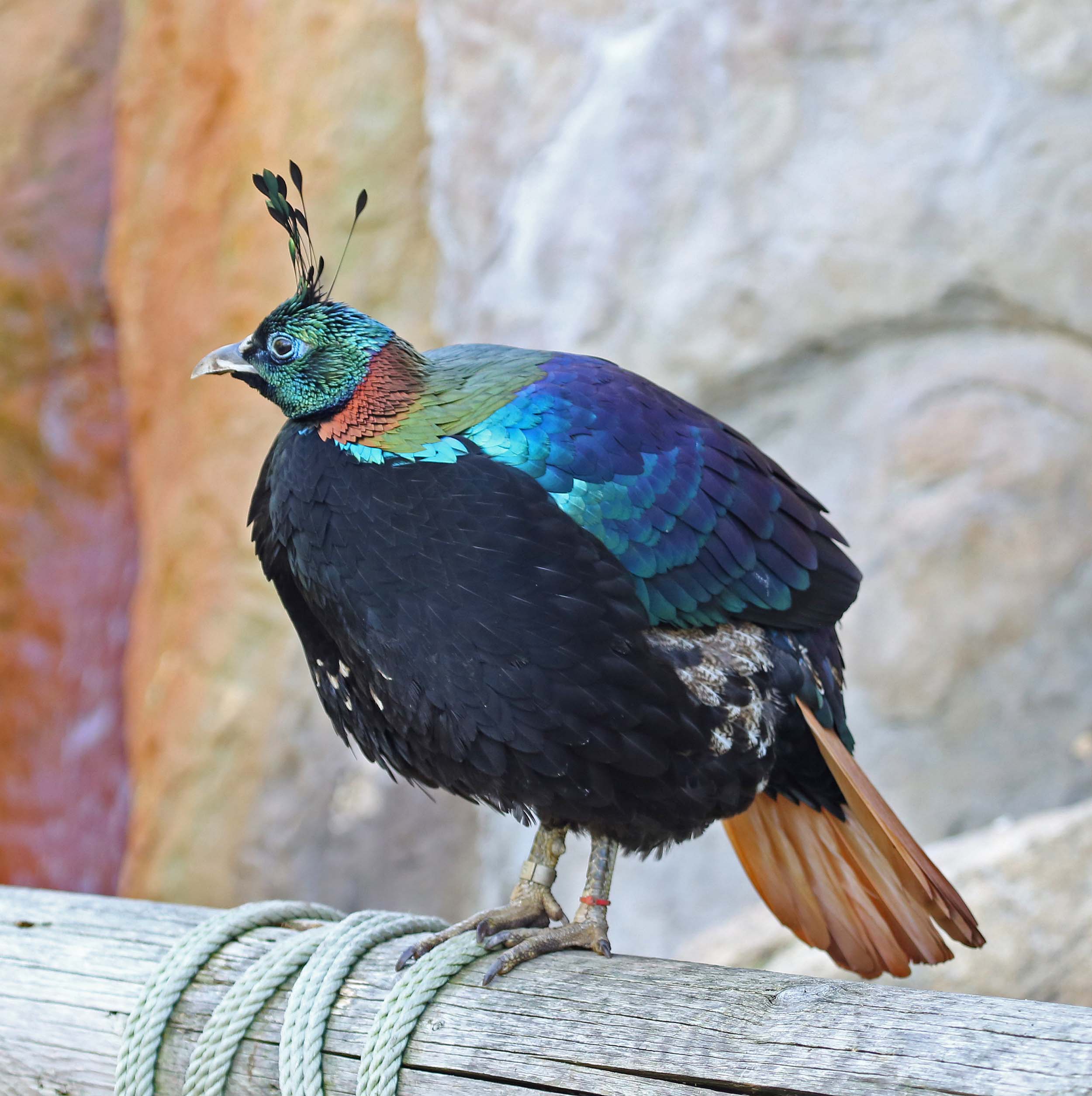

The iridescent rainbow-like plumage of the male is surpassed only by the slightly larger Chinese monal ( Lophophorus lhuysii). This method of foraging leaves conspicuous areas of turned over soil up to 25 cm deep on hillsides (2).Ī stunningly colourful member of the pheasant family, the Himalayan monal is the national bird of Nepal. Like many of the pheasants, quails and partridges in the Phasianidae family, the Himalayan monal has very strong legs and a long, curved beak which together enable it to dig into the hard soil of the mountains to uncover seeds, tubers, shoots, berries, and insects. After six months the young are completely independent and must search for food and mates alone (5).

The female must incubate the eggs alone, but the male will stand guard throughout the 27-day incubation period and until fledging to protect the eggs and chicks from predators. Once a female notices his display they mate and shortly afterwards she scrapes a nest in the ground and lays between three and five eggs. The male switches from calling only in the early morning to calling throughout the day.

The breeding season begins in April when the monals are at higher altitudes. Males also use body displays to attract females bobbing the head-crest and fanning their tail feathers. The Himalayan Monal is a highly-valued bird in its place of origin, as it’s the national bird of Nepal and also the state bird of the Indian state Uttarakhand.A highly communicative bird, the Himalayan monal uses several different call types to express meaning to its mate, other birds in its foraging group, or intruding birds. After six months, young Himalayan monals are completely independent and start their own journey. He also waits until chicks’ fledging to protect the chicks from predators. While the female Himalayan monal does the incubation alone, the male stands guard throughout the incubation period. The female lays between three and five eggs and incubates them for 27 days. The breeding season of the Himalayan monal begins in April when these birds are at higher altitudes. Both sexes have pale-yellow legs and bright blue circles around the eyes. The female Himalayan monal also has a shorter crest which is brown with ordinary feathers. They are overall dark brown, except for a white throat and rump patches. Female Himalayan monals don’t share the same splendour of their mates.

The tail feathers are rufous, and the rump is white which is most visible when the bird is in flight. The male Himalayan monal is also notable with his long, metallic green crest, and the coppery feathers on his back and neck. He possesses a multi-colored plumage throughout his body which consists of interspersing mix green, purple, red and blue. The iridescent rainbow-like plumage of the male Himalayan monal is surpassed only by the slightly larger Chinese Monal. It’s a resident of the Himalayas, from eastern Afghanistan to western China. The Himalayan Monal, also regionally known as the Impeyan Monal or the Impeyan Pheasant, is a stunningly colorful member of the Pheasant family.


 0 kommentar(er)
0 kommentar(er)
